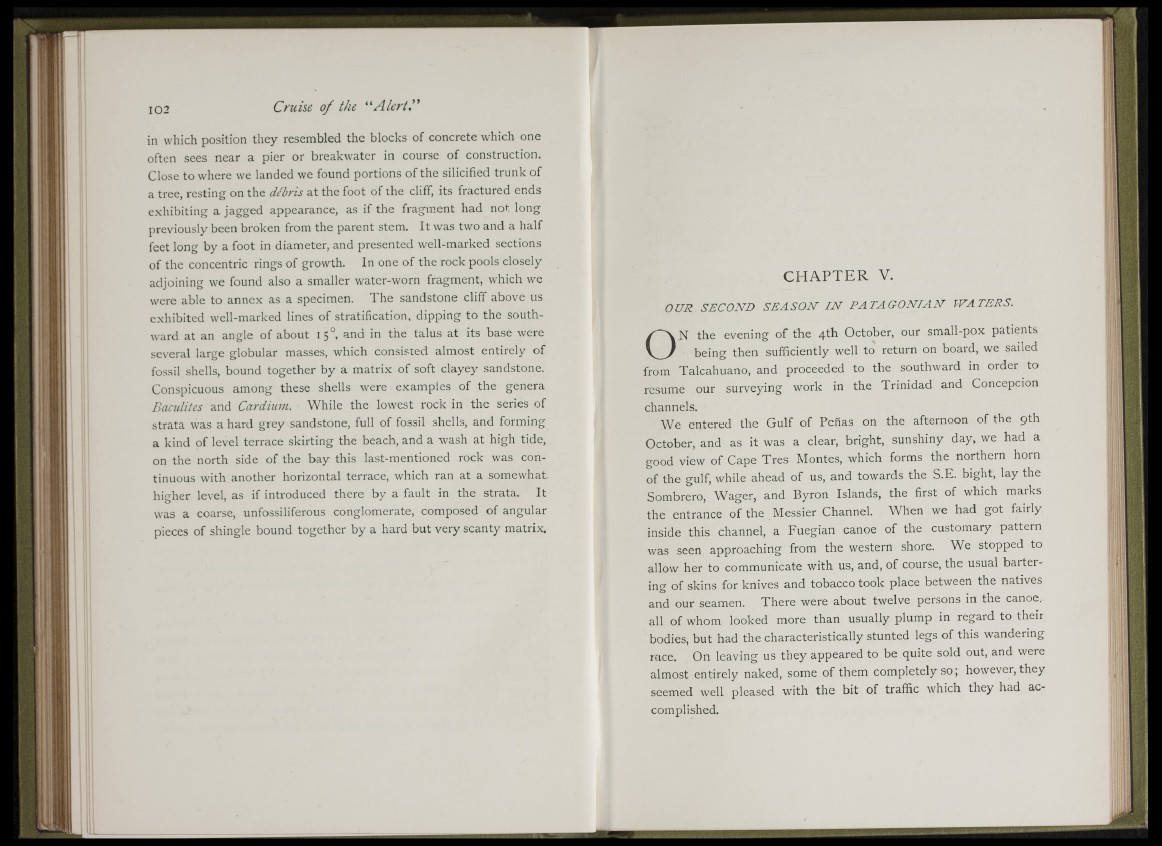
Hi
in which position they resembled the blocks of concrete which one
often sees near a pier or breakwater in course of construction.
Close to where we landed we found portions of the silicified trunk of
a tree, resting on the débris at the foot of the cliff, its fractured ends
exhibiting a jagged appearance, as if the fragment had not long
previously been broken from the parent stem. It was two and a half
feet long by a foot in diameter, and presented well-marked sections
of the concentric rings of growth. In one of the rock pools closely
adjoining we found also a smaller water-worn fragment, which we
were able to annex as a specimen. The sandstone cliff above us
exhibited well-marked lines of stratification, dipping to the southward
at an angle of about i 5°, and in the talus at its base were
several large globular masses, which consisted almost entirely of
fossil shells, bound together by a matrix of soft clayey sandstone.
Conspicuous among these shells were examples of the genera
Baculites and Cardiuvi. While the lowest rock in the series of
strata was a hard grey sandstone, full of fossil shells, and forming
a kind of level terrace skirting the beach, and a wash at high tide,
on the north side of the bay this last-mentioned rock was continuous
with another horizontal terrace, which ran at a somewhat
higher level, as if introduced there by a fault in the strata. It
was a coarse, unfossiliferous conglomerate, composed of angular
pieces of shingle bound together by a hard but very scanty matrix.
CHAPTER V.
OUR SE CO N D S E A S O N I N P A T A G O N I A N W A T E R S .
ON the evening of the 4th Cctober, our small-pox patients
being then sufficiently well to return on board, we sailed
from Talcahuano, and proceeded to the southward in order ^ to
resume our surveying work in the Trinidad and Concepcion
channels.
We entered the Gulf of Peñas on the afternoon of the 9th
October, and as it was a clear, bright, sunshiny day, we had a
good view of Cape Tres Montes, which forms the northern horn
of the gulf, while ahead of us, and towards the S.E. bight, lay the
Sombrero, Wager, and Byron Islands, the first of which marks
the entrance of the Messier Channel. When we had got fairly
inside this channel, a Fuegian canoe of the customary pattern
was seen approaching from the western shore. We stopped to
allow her to communicate with us, and, of course, the usual bartering
of skins for knives and tobacco took place between the natives
and our seamen. There were about twelve persons in the canoe,
all of whom looked more than usually plump in regard to their
bodies, but had the characteristically stunted legs of this wandering
race. Cn leaving us they appeared to be quite sold out, and were
almost entirely naked, some of them completely so; however, they
seemed well pleased with the bit of traffic which they had accomplished.
dl
%wiináftJ Érr—1 mA